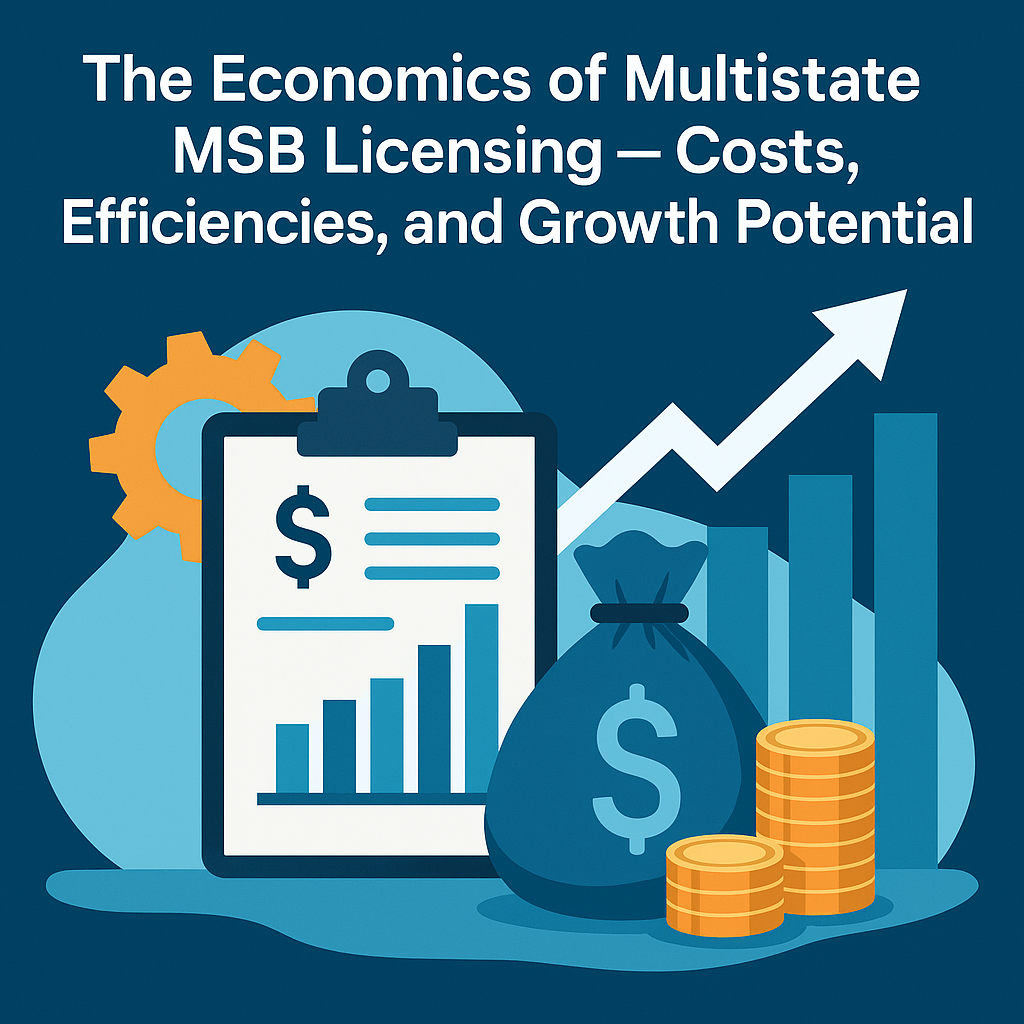Introduction
Money Services Businesses (MSBs) have become essential to the U.S. financial system, powering everything from remittances and payment processing to digital wallets and crypto platforms. However, the regulatory structure in the United States has always been fragmented, requiring MSBs to obtain a license in each state where they operate. Historically, this created a high-cost, high-friction model that limited smaller operators and slowed industry growth.
In recent years, the adoption of the Money Transmission Modernization Act (MTMA) across more than 30 states has significantly improved the landscape. For the first time, businesses can pursue a multistate licensing strategy with harmonized capital requirements, standardized bonding, and shared examination protocols. The result is that multistate licensing is no longer just a legal necessity — it is an economic opportunity.
Cost Structure of Multistate MSBs
Obtaining and maintaining MSB licenses involves considerable investment. Costs can be grouped into three categories:
1. Application Expenses
– Legal & Advisory Fees: Preparing applications, drafting compliance programs, and coordinating with regulators.
– Surety Bonds: Typically starting at $50,000 and scaling into the millions depending on transaction volume.
– Capital Requirements: States often require a minimum tangible net worth of $100,000 to $500,000.
2. Ongoing Operational Costs
– Annual license renewals and reporting.
– Independent compliance audits and financial examinations.
– Staff training, transaction monitoring systems, and KYC/AML upgrades.
3. Indirect Costs
– Time delays caused by inconsistent state processes.
– Opportunity costs from being unable to serve certain markets until licenses are approved.
Economies of Scale
The major advantage of multistate licensing lies in economies of scale. By spreading compliance and regulatory costs across multiple markets, an MSB can significantly improve its return on investment.
– Centralized Compliance Programs: One AML/KYC framework can support multiple states, especially as MTMA adoption expands.
– Shared Examinations: States working under MTMA protocols now conduct joint audits, reducing duplicative oversight.
– Operational Efficiency: Technology platforms for transaction monitoring, reporting, and onboarding scale more effectively in a multistate model.
Revenue Opportunities
The case for multistate licensing is not just about cost efficiency — it is also about unlocking new revenue streams:
– Access to High-Volume States: California, New York, Texas, and Florida represent some of the largest remittance and payment processing markets in the U.S.
– Institutional Partnerships: Banks, payment processors, and card networks prefer to work with MSBs that have broad regulatory coverage.
– Customer Growth: Multistate licensing allows fintechs to scale nationally, offering services across multiple jurisdictions.
– Diversified Business Models: Expanded licensing supports prepaid card issuance, merchant acquiring, or crypto custody without geographic restrictions.
Cost vs. Revenue Considerations
| Costs | Revenue Opportunities |
| Legal and advisory fees for multiple state applications | Access to customers in high-volume states |
| Surety bonds scaling with transaction volume | Ability to secure institutional partnerships |
| Capital requirements of $100,000–$500,000+ | Customer growth across multiple states |
| Annual renewals and compliance audits | Expansion into diversified financial products |
Risks and Barriers to Entry
– High Capital Thresholds: Smaller startups may struggle to meet net worth and bonding requirements.
– Banking Access: Even licensed MSBs often face difficulty opening accounts with U.S. banks.
– Ongoing Scrutiny: Regulators closely monitor MSBs for AML violations, requiring continuous investment.
– Legal Complexity: Non-adopting states maintain unique requirements that complicate operations.
Future Outlook
The U.S. MSB licensing environment is evolving rapidly. With more states expected to adopt the MTMA, barriers to multistate expansion will continue to fall. Key trends include:
– Predictable Licensing Costs: Standardized net worth and bond requirements make planning easier.
– Faster Expansion: Streamlined documentation and shared examinations reduce delays.
– Market Consolidation: Larger multistate MSBs will capture more market share as smaller operators exit.
– Integration with Banks: Scaled MSBs may become acquisition targets or strategic partners for financial institutions.
Conclusion
Multistate MSB licensing is no longer just a compliance requirement — it is a strategic economic decision. While the costs of licensing and compliance are significant, the efficiencies gained through scale and the revenue potential of entering major markets make the case compelling. For fintechs, payment processors, and international banks, the question is not whether to pursue multistate licensing, but when and how to do it efficiently.

